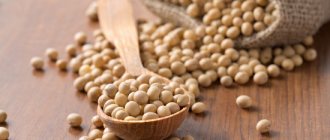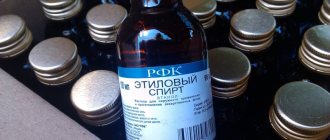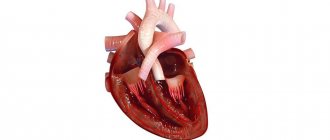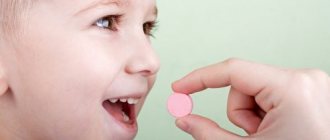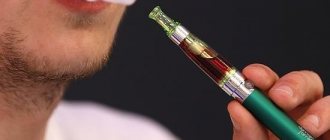Home > Bee venom
Bee venom is a substance produced by certain special glands located in the abdominal cavity of the bee. It is a clear aqueous liquid with a pungent, bitter taste and aromatic odor (comparable to the aroma of ripe bananas), a distinctly acidic substance.
It is easily soluble in water and acids, almost insoluble in alcohol. Contains 30% solid material. The poison dries quickly at room temperature. Transforms into a sticky substance without loss of virulence. It is very heat resistant, it can withstand temperatures of 100°C for ten days without loss of power. Pure bee venom has a powerful anti-inflammatory effect, therefore it is often used as part of targeted medications, as well as in apitherapy treatment.
Since time immemorial, bee venom (apitoxin) has been used to treat various diseases. If bee venom is used correctly as prescribed by a doctor, it effectively treats many diseases. But the use of bee venom requires caution, taking into account all indications and contraindications.
Treatment with bee venom is called apitoxin therapy.
Treatment with bee stings
Since ancient times it has been known that bee stings have a beneficial effect on the human body.
Hippocrates also used bee stings to treat various diseases. Apitherapy was first used back in 1930. Today it is successfully used to treat diseases of the peripheral nervous system - radiculitis, neuralgia, neuritis, rheumatism and joint diseases of various etiologies.
Recently, acupuncture apitherapy has gained great popularity. In this case, bee venom is introduced into certain biological points. The effect of poison on acupuncture points is due to the accumulation of main nerve receptors and “mast cells” in them, which have a direct connection with the central organs. This effect activates the production of many enzymes - histamine, heparin, serotonin.
Acupuncture apitherapy is widely used for rheumatism, polyarthritis, diseases of the peripheral nervous system, vascular and hypertension diseases, trophic ulcers, inflammatory processes, and migraines.
When conducting apitherapy, it is important to comply with a number of generally accepted requirements:
- Gradual increase in the dose of injected poison. If a patient has an allergic reaction to 5-6 bee stings, treatment should begin with 2-3 bees. In this case, it is necessary to gradually increase the time the sting is in the body, which will ensure gradual adaptation to the allergen.
- Following a strict diet. During treatment, a dairy-vegetable diet is necessary. The consumption of alcoholic beverages, spices and foods high in fat is strictly prohibited.
- Treatment with bee venom immediately after eating is not allowed.
- After treatment procedures, it is forbidden to take a bath, sunbathe or engage in physical exercise.
- The rest time after a treatment session should be at least 1 hour.
- During the treatment process, it is necessary to take a day off once a week.
- To increase the effectiveness of treatment, it is recommended to take other bee products orally.
There are generally accepted treatment regimens for apitherapy, and each individual disease has its own individual regimen. For hypertension, acupuncture points are located on the outer surfaces of the upper and lower extremities, the use of no more than 4 bees is allowed, treatment is carried out at intervals of 2 times a week. For superficial sacral radiculitis, bees are placed on the lumbar and sacral area in the amount of 8-12 pieces. For eye diseases, the effect is applied to acupuncture points located in the temple area, and the use of 2-4 bees is allowed. To strengthen the immune system, bees are placed on the outer surface of the thighs every 4-5 days. The average time the poison affects the body is 5-10 minutes, depending on the type of disease.
Treatment with bee stings should only be carried out under the supervision of a doctor. This will help avoid the negative effects of bee venom and reduce the risk of an allergic reaction. Bee venom is a powerful allergen; in some cases it can even cause anaphylactic shock. Only a doctor will be able to calculate the dose and time of exposure to the poison, because each person is individual, which requires a special approach in each specific case. In addition, before apitherapy, a test for an allergic reaction to bee venom should be performed.
Application in medicine
In addition to direct bee stinging, bee venom is recommended and used by doctors in other forms:
- Powder in ampoules (for sono- and electrophoresis and inhalation),
- Water- and oil-based solutions,
- Lozenges,
- Preparations for injection (subcutaneous)
- Products for external application (creams, ointments, gels, balms).
Ointments, creams and gels based on bee venom usually consist of three components:
- per 1 g – 0.2 mg of poison (as with the weakest bite);
- base (water, essential oils, etc.);
- components that enhance the effect (for example, salicylic acid, which increases cell permeability).
Balms - for external use (stomach juice destroys bee venom).
Gels are water-based to reduce the risk of allergic reactions.
You need to apply ointments with bee venom:
- on clean skin;
- without damage;
- with clean, dry hands (gloves are possible);
- For acute pain - quickly;
- For chronic cases - until completely absorbed.
Some popular bee venom products:
| Drug name | Features and Components |
| Apizartron and its analogues | The concentration of apitoxin is 10 times higher than in conventional creams. |
| Pastes (against periodontal disease) | Poison concentration - 1% |
| Bee venom ointments (991, “ Sofia”, “Sustavit”) | Sabelnik with bee venom, comfrey, juniper oils, sea buckthorn, eucalyptus olives, sage extract, panthenol. |
| Virapin | Only 2 components: apitoxin; lipophilic base. |
| Apitrin | camphor oil |
| Gel “Comfrey with bee venom” | In addition to those listed in the title - essential oils and plant extracts |
They also use combinations of bee and snake venom or shark oil, etc.
Bee venom is actively used in cosmetics: lipsticks, hygienic lipsticks, injections, creams are very popular along with sono- and iontophoresis (see below).
Indications and contraindications for bee venom
Apitoxin is usually considered as a medicine when other treatments do not produce the desired effect. The list of such diseases includes:
- chronic and acute joint pain;
- multiple sclerosis;
- blood thickening;
- neuralgic disorders;
- heart problems (except heart failure);
- autonomic disorders, chronic fatigue, migraines.
Treatment with apitoxin cannot be used:
- individual intolerance (allergic reaction, idiosyncrasy) is the most important point, since allergies can be deadly for the patient;
- pregnancy (may have a negative effect on the fetus);
- mental disorders.
Women are not recommended to be treated with bee venom during menstruation, when the body is already weakened.
Contraindications and restrictions also apply to certain diseases (and are mainly related to blood and toxicity):
| Diseases | Causes |
| heart failure | A sharp increase in blood flow and increased heart rate can worsen the situation |
| diseases of the blood and hematopoiesis | No need for toxic substances in the blood |
| Diseases of the genitourinary system, liver, kidneys, adrenal glands, pancreas and biliary tract | Do not overload the organs that remove toxins with additional work. |
| Oncology | Spread of metastases through the blood, weakened immunity |
| tuberculosis | Immunity burden |
| infectious (especially venereal) diseases | |
| diabetes mellitus | Some substances provoke a sharp rise in sugar |
| Exacerbations of the above diseases | It is strongly not recommended to overload the body during exacerbations. |
| exhaustion | A weak body may not be able to cope with aggressive foreign substances |
Helpful advice: do not apply apitoxin to open wounds and scratches.
Methods of introducing bee venom into the body
Treatment can be carried out either with fresh bee venom (i.e. directly with a bee sting), or mixed with other active ingredients.
In its pure form:
| Bee sting | Advantages | Flaws |
| Directly by the bee | The effect is stronger | It's hard to get to the right place |
| A stinger extracted from a bee | Can be placed exactly in the right place Looks more professional | Effect below |
Apitherapy involves gradually increasing the dose of the poison received. With each new bite, a person develops immunity to the allergen.
Within an hour after a bee sting you should not:
- to take a bath;
- sunbathe;
- exercise.
It is prohibited to use:
- alcohol;
- spices;
- fatty dishes.
and also place the bees immediately after eating.
The reason is increased load on the liver + undesirable combinations of active substances.
It is recommended to take other bee products to increase the effect.
An individual bee treatment regimen has already been thought out by scientists with doctoral degrees and is modified for a specific patient.
Example:
| Disease | Apitoxin injection site | Quantity and frequency |
| hypertension | Extremities (external surfaces) | Up to 4 bees once a week |
| radiculitis | Lumbar and sacrum | 8-12 pieces |
| eyes | whiskey | 2-4 pieces |
| Strengthening the immune system | Hips (outer surface) | Once every 4-5 days |
A powerful method of treatment is acupuncture apitherapy (officially formalized in 1930), since the site of bee stings is a cluster of nerve receptors.
Bee venom is also used in mixtures and solutions:
| Release forms | Purpose |
| Injections | against allergies, neuralgia and neuritis |
| inhalation | we treat lung diseases |
| electro- and iontophoresis (electricity) | In cosmetology, to improve the skin of the face and neck, as well as to remove old scars and scars. |
| phonophoresis (with ultrasound) | |
| rubbing and local baths | Warming - after intense muscle work, local penetration (for example, joint diseases, sprains, myositis (muscle inflammation), for osteochondrosis, for lower back pain, for neuralgia, for the back, restores joint mobility, etc.) |
| resorption | In the oral cavity + under the tongue is absorbed faster into the blood |
Action and properties of bee venom
The effect of apitoxin on the human body has been studied far and wide, including by the Russian Ministry of Health. Scientifically proven effect on:
- vessels;
- nerve endings;
- adrenal glands;
- skin tissues,
- bacteria.
Apitoxin has both benefits and harms. For example, increased blood supply to a diseased organ or joints can speed up their recovery, but forced adrenal function during an exacerbation of Addison's disease can seriously worsen the situation. Apitherapists know how to correctly use the properties of bee venom, so it is better to entrust treatment with bee stings (at least at first) to them.
Beneficial features
Apitoxin is valued for its beneficial properties, of which there are dozens!
Disinfecting, anti-inflammatory, bactericidal effect - destructive effect against 17 types of bacteria:
- coli;
- diphtheria bacillus;
- staphylococci (including aureus);
- streptococci;
- pathogens of typhoid, tuberculosis, etc.
Improving blood quality:
- more hemoglobin and leukocytes (as red blood cells and platelets decrease),
- decreased ESR (erythrocyte sedimentation rate),
- reduction of blood viscosity (good blood flow, saturation of cells with oxygen - the key to health).
The immunizing effect of apitoxin is a safe shake-up of the body, training of leukocytes.
- blocks pain centers;
- relieves pain (for some joint diseases - almost instantly).
- prevent fluid from escaping into the tissue (no fluid – no edema);
- trap cells that promote inflammation.
Bee venom activates the adrenal cortex, triggers the synthesis of cortisol and steroids. If their production is blocked by corticosteroid hormones, the adrenal glands begin to work as expected.
Bee venom also has a hyposensitizing effect - reducing susceptibility to the allergen and, accordingly, treating chronic diseases such as bronchial asthma.
Apitoxin stops the destruction of nerve cells, moreover, it triggers the formation of new endings, which has a good effect in the treatment of multiple sclerosis.
- triggers the synthesis of collagen and elastin, which smoothes and reduces wrinkles;
- causes a rush of blood to the lips, causing them to become fuller and brighter;
- scars are straightened and peeling is eliminated.
In addition, the poison has a diuretic effect (though not always, apparently depends on the individual) and, oddly enough, protects against radiation.
Harm from bee venom
No matter how useful bee venom is, it must be used with caution. Unfortunately, there are negative effects that occur in 2% of patients:
- red blood cells are severely destroyed (hemolysed);
- blood clotting quickly decreases (a controversial point, since apitoxin is often used specifically to thin the blood);
- glucose levels increase (hyperglycemia);
- mineral metabolism is disrupted;
- potassium, phosphorus and calcium are washed out in the blood, which makes bones brittle;
- sodium is retained;
- protein appears in the urine;
- heart rhythm is disturbed;
- swelling occurs.
In addition, an allergy to bee venom can become a serious problem. Depending on where the bee stung, the consequences may be different.
Honey and its uses
The most famous beekeeping product is honey, which has a unique composition and activates biological processes in the body.
But with a high demand for honey, the share of counterfeit products is high. You can purchase guaranteed natural honey from a beekeeper. The best are considered to be flower, mountain and buckwheat collections. By taking the hives to flowering areas, various varieties of honey are obtained, named after the plant from which the pollen was collected. Natural healer honey and bee products that have not passed veterinary control and do not have a quality certificate can be dangerous. Beekeepers may use illegal drugs or collect bribes from fields treated with chemicals.
Honey is considered a valuable energy product, as it consists of 75% fructose and glucose, which are directly absorbed by the body. In addition, the rich enzyme composition, the presence of organic acids, and vitamins accelerates metabolism, improves immunity and has a beneficial effect on the nervous system and gastrointestinal tract.
Other beekeeping products are used by humans taking into account their specifics and on the recommendation of a doctor.
Effect on cardiac activity
Bee products
Many patients are interested in how bee venom affects humans. It is worth understanding this issue in more detail. The useful properties of the product include:
- ganglion-blocking effect, which allows you to normalize blood pressure and also inhibits impulse transmission;
- reduces spasms of large vessels located in the extremities, this makes it possible to use the substance for peripheral vasospasms;
- helps increase cerebral blood flow;
- has a positive effect on blood flow in the coronary artery;
- the composition contains a peptide, which makes it possible to use the bee product to eliminate arrhythmia;
- in case of heart failure, helps reduce the number of heart beats;
- in other cases, it increases the number of contractions of the heart muscle.
Are there any restrictions (contraindications)?
Of course, there are also contraindications. First of all, people who have an allergic reaction to any other bee products should be careful with bee venom. Apitoxin therapy is also not acceptable for conditions such as:
- acute stages of infectious diseases;
- sepsis and acute purulent diseases;
- tuberculosis;
- cancer;
- blood diseases;
- heart failure;
- diseases of the kidneys, liver and pancreas;
- the waiting period for the child;
- earlier childhood (preschool period).
How is bee venom treated?
Typically, local, controlled bites are applied to areas of the body that need treatment or stimulation. Ointments prepared from bee venom are also widely used. They relieve pain, reduce inflammation in muscles and joints, and the maximum effect from the use of ointments is achieved specifically for the treatment of joint diseases - in particular, arthritis. For bronchopulmonary diseases, bee venom is used for inhalation. There is also a form of taking bee venom in the form of preparations in tablets, and sometimes preparations based on bee venom are administered in the form of injections.
It is important to remember that in the process of apitherapy, drinking alcohol and smoking are excluded, and you should not use drugs based on bee venom or be treated with bee stings after intense physical activity, when the metabolism in the body is strengthened and accelerated. To avoid an allergic reaction, first they carry out an allergy test: they give one bee a bite, repeat the bite every other day, take blood and urine tests, and if everything is normal, proceed to a course of apitoxin therapy
To avoid an allergic reaction, first they carry out an allergy test: they give one bee a bite, repeat the bite every other day, take blood and urine tests, and if everything is normal, proceed to a course of apitoxin therapy.
Its principle is as follows: on the first day one bee stings, and then throughout the course (from 10 days to 2 weeks) 1 sting is added per day. This is followed by a break of 3-4 days, and they move on to the second course, multiplying the daily number of bees by three compared to the first stage.
In parallel with the course of apitoxin therapy, the patient is prescribed a “honey course” - taking therapeutic portions of honey (up to 100 g) daily.
Any method of conducting apitherapy is carried out exclusively by a physician, a specialist in this field. Only a doctor knows thoroughly what bee venom is, how it affects the body and how not to harm it, and the doctor will be able to cope with sudden allergic manifestations, avoiding negative consequences.
Be healthy and benefit only from natural healing remedies!
Electricity
The second, less labor-intensive method, proposed by N.M. Artemov and I.S. Malt, allows you to get more bee venom. To do this, 50 g of bees are shaken into a large box and, using a movable board, they are forced to be evenly distributed on the bottom. The removable bottom of the box is equipped with a poison receiving device. The top layer of the bottom is covered with a film of animal origin, under which 2-3 layers of filter paper are placed, and a sheet of cellophane is placed underneath.
A wire is pulled under the venom receiving device, and an electric current is passed through it from an induction coil connected to a battery with a voltage of 6-8 V. Under the influence of electric current, the bees are irritated and sting the top film, as a result, the poison collects in the filter paper. After this, the bottom of the box is removed, the stingless bees are removed, the bottom of the box is put back in place and the operation is repeated up to 10 times. After the operation is completed, remove the filter paper, which contains a large amount of poison.
Extraction of bee venom
Electrical stimulation is the most popular method of extracting bee venom
Depending on the purposes and purposes of using bee venom, it is extracted in different ways. The thing is that the content of some substances in the required consistency directly depends on the age of the bee.
For example, a large amount of melitin is secreted on the tenth day of a bee’s life, and histamine on the 30-45th day of its life. The technology for extracting poison and then obtaining the necessary components from it directly depends on this.
The most common way to obtain bee venom is electrical stimulation of bees when exposed to a weak pulse current.
If we consider the production of poison through electricity, then since 1980 about 30 methods of such production have been proposed. Scientists have also proven that the use of electricity in small doses does not shorten the lifespan of a bee.
It is important to remember that collecting bee venom both in the nest and above the nest significantly reduces the honey content in the hive
Very high demands are placed on collecting bee venom using the electrical stimulation method. Obtaining poison in this way occurs through a poison receiver.
After contact with the poison glass, the poison is dried and scraped into dark glass jars. The resulting product must be sifted through a special sieve. The content of macroimpurities in the poison should not be more than 3%.
Many beekeepers recommend collecting venom in warm, dry weather in the early morning hours. About 2 hours before the bees fly. The poison collection process itself is recommended to be carried out no more than once every two weeks. Under no circumstances should you take poison from bees during the honey harvest period.
During one poison collection procedure, approximately 1 gram of product is obtained from a family. For the entire season up to 5 grams.
Apistimulator - device for obtaining bee venom
Collecting bee venom is a very difficult procedure, which requires a responsible approach from specially trained beekeepers
It is important to follow increased safety rules. You also need to properly dry and process the poison, otherwise it will lose its beneficial properties.
All work on poison collection must be carried out in special respirators. Since the poisonous vapors released can cause irreparable harm to health in the form of allergic reactions and irritation of the mucous membranes of the respiratory tract.
In addition, it is necessary to constantly test the resulting product for compliance with quality. Biological tests greatly complement the qualitative and quantitative characteristics of bee venom samples.
There is also a way to extract poison when the bee gives it away without damaging the sting. And the last method is the use of ether. These methods are associated with certain risks: the first with insufficient productivity, the second with a large number of impurities in the poison. Therefore, the method using current is the most common.
The methods differ in the amount of venom collected, its quality, etc. But all methods have one thing in common - extracting benefits from bee venom.
Content:
- 1 Chemical composition of bee venom
- 2 Methods for obtaining bee venom
- 3 Effect of bee venom on the body
- 4 Bee venom as a remedy
Description
In honeybees (worker bees and the queen), at the end of the abdomen there is a protective organ - the stinging apparatus
, which consists of a sting, two poisonous glands and a reservoir for poison (Fig. 3).
Rice. 3.
Bee sting:
1 - large poisonous gland;
2 - reservoir for poison; 3 - small poisonous gland; 4 — tip case; 5 — sled; 6 — stilettos; 7—the stiletto and its notches are shown separately. The piercing parts of the sting have notches.
, preventing it from being removed from the skin. When stinging, a bee inserts the tip of its sting into the skin. Having stung, the bee flies away, and the sting, lingering in the skin, comes off along with the entire stinging apparatus. Under the influence of contracting muscles, the sting continues to penetrate further into the skin, and all the poison gradually pours out of the reservoir into the wound. Therefore, in order to reduce the effect of the poison, immediately after a sting you should remove the sting from the skin.
In cases where the sting is used for medicinal purposes, the sting should, on the contrary, be left in the skin for 5-10 minutes so that the poison from the glands is completely released. A few hours after the sting, the bee dies.
Sensitivity and immunity to bee venom
No more than 2% of people suffer from hypersensitivity to bee venom. It only takes one bite for them to develop a severe allergic reaction or anaphylactic shock.
Others are resistant to bee venom. Scientists have found that numerous insect bites, on the contrary, cause the body to develop immunity. Indeed, beekeepers can be stung dozens of times during the day, but they do not develop any dangerous or fatal conditions. On the contrary, they have excellent health and, as a rule, there are many long-livers among them. Experienced beekeepers with extensive experience can easily endure up to 1000 stings. Good immunity is also developed in those who undergo apitherapy courses. But with long breaks, the body’s susceptibility to the components of bee venom increases again.
The source and principle of the formation of such immunity have not been fully elucidated. Attempts to explain this phenomenon by the production of antibodies were unsuccessful. Most likely, the answer lies in the body’s adaptation mechanism to bee venom, which is why immunity is temporary.
The effect of bee venom is multifaceted, it all depends on its dosage and the individual characteristics of each organism. This substance can be fatal and... So, for some, bee venom becomes an invaluable medicine, and for others, it becomes a dangerous toxin and allergen.
Bee venom is considered the most popular, effective medicine, which is a waste product of bees. It has been used in folk medicine since the time when traditional medicine began to emerge, and there were no other medicines. Until now, such poison is one of the best natural remedies.
It is a weapon of insects, thanks to which bees protect their own home in case of danger. The insect begins to attack the person, bite him, and also release poison into the blood. After the sting, the bee dies, but the aroma notifies its fellows of the impending danger.
Bee venom is a clear liquid with a rare, persistent odor and pungent taste. If it is left in the open air, it hardens quickly, but does not lose its healing properties. Due to its healing properties, it is used in the treatment of many diseases. The effect of bee venom on the human body is so great that no drug can compare with it.
Do not forget that treatment with bee venom may have contraindications, so before using this therapy technique, you must consult a doctor and undergo the appropriate tests.
How is it formed
Bee venom has properties similar to a powerful antibiotic. The substance begins to form in the filamentous glands of bees. Over time, the amount of the substance gradually increases and reaches a maximum at the age of 2 weeks. It is interesting that depending on the age and their habitat, the composition of the poison may change.
Compound
The main component is melittin, which is what causes the burning sensation when a bee stings. The component perfectly lowers blood pressure and dilates blood vessels. A substance such as phospholipase rejuvenates the body, improves blood composition, reduces or completely removes hematomas.
If we consider the chemical composition of the poison, we can distinguish the following components:
- microelements – magnesium, phosphorus, calcium, copper;
- acetylcholine and histamine - expand the diameter of blood vessels and increase their permeability;
- inorganic acids – phosphoric acid, hydrochloric acid, formic acid;
- amino acids – 18 out of 20 existing;
- acid phosphatase is a protein that has a complex structure;
- hyaluronidase is a special enzyme that breaks down tissue and blood structures, causing a strong allergic reaction;
- phospholipase A – for the human body it is a powerful allergen and antigen, disrupts the process of tissue respiration and converts phospholipids into toxic substances;
- phospholipase B – converts toxic compounds into non-toxic ones, reduces the activity of phospholipase A.
Mechanism of action
Phospholipase A, which is part of bee venom, acts on lecithin, breaks it down and becomes part of the cell membranes. At the same time, the cells begin to partially collapse, and sometimes undergo complete disintegration. Phospholipase A also has a targeted effect on red blood cells, which causes their complete hemolysis. Hyaluronidase increases vascular permeability, the rate of absorption of the poison increases, and its toxic effect intensifies.
Negative effects of poison on the body
Do not forget that bee venom is a strong allergen, so its effect on the body is not limited only to beneficial qualities. Severe intoxication can lead to very sad consequences. Multiple bites in a short period are especially dangerous. It is believed that 180 or more stings cause poisoning of the body, often in severe forms. The critical dose for an adult can be considered 450 or more bites in a short time.
Children, elderly people, as well as pregnant and young nursing mothers are most sensitive to the effects of bee venom.
Bites on the fingertips, ears and nose area are especially painful, but they do not cause much harm. The most dangerous places for stings are:
- eyelids and areas around the eyes (in this case, an inflammatory process occurs, which can be accompanied by suppuration and conjunctivitis, and there is also a risk of developing cataracts, a serious and dangerous disease of the visual organs);
- pharynx and oral cavity (swelling and swelling of the mucous membrane can lead to mechanical suffocation and death of the bitten person).
Indications
The most universal procedure in apitherapy is classic insect bites. The list of indications for which the doctor will offer you a close acquaintance with bees includes a variety of diseases:
- rheumatic conditions;
- some forms of arthritis and arthrosis;
- diseases of the peripheral nervous system (radiculitis, intercostal neuralgia, etc.);
- vascular diseases (thrombophlebitis, atherosclerosis);
- hypertension;
- trophic ulcers;
- inflammatory formations (infiltrates);
- bronchial asthma;
- migraines, etc.
Sometimes apitherapy techniques are recommended as part of a complex treatment for various ailments. Thus, there is a “honey” option for the treatment of enuresis in children and young people, when, simultaneously with a bee sting, the patient needs to take bee pollen and give enemas with a honey solution.
What diseases can be treated with apitoxin therapy?
Bee venom should not be considered as a panacea for all diseases, but still the range of its use is quite wide:
- diseases of the nervous system: paralysis, paresis, consequences of strokes or injuries, as well as age-related destructive changes;
- bronchial asthma, asthmatic bronchitis, as well as many other bronchopulmonary diseases;
- problems with the functioning of the myocardium (heart muscle);
- inflammatory changes in blood vessels;
- disorders in the endocrine system: problems with the thyroid gland (thyrotoxicosis), as well as diabetes;
- rheumatism, arthritis, arthrosis, neuralgia, osteochondrosis;
- infectious diseases;
- skin problems (ulcers, psoriasis, difficult-to-heal wounds).
How to obtain bee venom
It takes a large number of bees to collect enough bee venom. The resource is collected in the apiary. There are 3 ways to obtain the substance:
- manually using tweezers;
- using peach oil;
- using a poison receiver.
Selecting venom manually requires a lot of time, skill and experience. When performing all actions with tweezers, insects must be caught one at a time and gently pressed so that the bee splashes out the poison, but not the sting. When using oil, several bees are dropped into the jar. The method is much simpler and faster, but most insects die.
The use of an electric grid, called a poison receiver, has made life much easier for beekeepers. The device sends an electrical impulse and causes the bees to release venom without damaging the stinger. In this way, the required amount of pure poison is obtained without serious harm to the hive. A net with a poison receiver is placed opposite the hive window. After that it is turned on.
It is important to remember that injecting the poison irritates the bees in itself, so approaching the hive after collecting the poison without special equipment is dangerous.
Mechanical collection method
It can be assembled using two methods - electrical and mechanical. However, if you decide to collect using a mechanical method, you must be prepared for the fact that the bees in the hives may begin to die. The fact is that with this technique you need to carefully take the bee with tweezers (as a result of which the sting will stretch out and the poison will begin to splash out) and apply the sting to the glass, on which you will collect the poison. After this, the bee is released. Thus, you can collect the venom of hundreds of bees on one glass.
There is a second option for mechanical collection. In fact, for this you just need to force the bees to sting the cellophane layer between the bee and the animal (for example, a pig, since it has thick skin and the animal will not feel pain). But both of these methods have a number of significant drawbacks.
Disadvantages of mechanical collection
Most often, as a result of these manipulations, the bee’s poison gland opens and the insect dies.
- The extraction process itself is very labor-intensive, and its efficiency is low.
- Service personnel are subject to a large number of bites.
Electrical method
When using the electric method of extracting bee venom, a special device is used, which is based on two main principles for obtaining the substance - bees secrete poison under the influence of a current discharge striking them and, most importantly, insects do not lose their sting, which is why they remain alive, producing something so necessary for humans medicine.
Due to the fact that bees survive, and service personnel practically do not suffer from insect bites, the second option for obtaining bee venom is more developed.
Methods for obtaining apitoxin
You can collect medicinal bee venom using a special device. The device is a three-dimensional box with a built-in poison receiver and conductors that supply a weak current. The disadvantage of the device is the cost. Not every beekeeper can afford such a purchase.
Mechanical method
The worker insect is carefully taken with tweezers and pressed on the chest area. The bee will immediately release the poison. All that remains is to carefully collect the product and transfer it to a glass container. Container or on a cotton pad.
Using an oil solution
Oil is poured into a glass container. Stretch cling film over it so that it touches the oil. An insect is placed on it, lightly pressing on the breast. Afterwards, the insect pierces the film simulating skin and releases poison. Apitoxin flows down and collects into balls.
Using an aqueous solution
Bees are placed in a glass container. Insects are euthanized with sulfur dioxide. Individuals will begin to extend their stingers from which poison will drip. The product is collected and the bees are washed with water. This method of collecting poison is not humane. Many insects die during the procedure. And even without poison, an individual can die. But if there was a need to obtain apimin. It is better to remove it from the bees after harvesting.
Is it possible to get poisoned by bee venom: first aid for a sting
Many people talk about the benefits of bee venom, but we should not forget that bee stings often even lead to death. Therefore, before starting treatment with this natural remedy, it is worth learning about contraindications. In particular, it is strictly forbidden to use it by people with:
- intolerance to bee products,
- acute stages of infectious diseases, including venereal, purulent, tuberculosis,
- high risk of re-development of diseases of the cardiovascular system and digestive organs,
- the presence of tumors of both malignant and benign nature, including the nervous system,
- blood diseases.
It is not recommended to use bee venom for pregnant women. You should not take medications with it after heavy physical activity, since it itself is capable of well stimulating the functioning of all body systems. In approximately 2% of cases, bee venom can also cause allergic reactions, which can manifest individually in each person:
- the mildest allergic reaction is characterized by mild itching and rashes, the presence of high fever, the development of edema,
- the cells at the site of the bite may become numb and then die,
- moderate allergic reaction - swelling of the face and larynx, spasms of the respiratory tract, due to which a person will not be able to swallow air,
- without emergency medical assistance, suffocation may occur,
- in the most severe situation, a person may develop anaphylactic shock from taking bee venom - rapid swelling of the larynx and suffocation, which can only be prevented by introducing adrenaline into the body.
Thus, although the benefits of bee stings remain obvious, bee venom should be handled with extreme caution. Before taking medications containing it, you should check your own tolerance.
Only this approach to treatment can give a positive result, since we are dealing with a deadly poison. If a person develops an allergic reaction after a bee sting, the following steps must be taken:
- Try to remove the sting from the bite site, being careful not to break it, so that its particles do not remain in the skin and infection does not develop.
- Wash the bite area with soap and water.
- Rub the bite area with baking soda solution.
- To relieve itching, you can apply something cold to the bite.
- Antihistamines should only be administered if the tumor is growing.
- If you have a fever, use antipyretics and drink as much fluid as possible.
But if a bee sting leads to complications, do not hesitate - immediately call an ambulance. Do not forget that multiple bites can even cause death.
The body's reaction to a bee sting
After a sting, bee venom produces local and general effects. First, the skin at the site of the sting turns red and swells, a sharp and burning pain occurs, and there is also an increase in temperature by several degrees (usually 2-6 degrees). The local reaction reaches its maximum after 15-20 minutes. Most healthy people can easily and without health consequences tolerate 5 to 10 simultaneous bites.
But with multiple stings or increased sensitivity of the body to bee venom, severe symptoms cannot occur. These include:
- rash in the form of urticaria on the skin;
- general malaise;
- Strong headache.
- In more serious cases, severe intoxication may cause:
- increased heart rate;
- dyspnea;
- a sharp decrease in blood pressure;
- fainting;
- inflammation of the lymph nodes;
- heavy sweating;
- vomiting and diarrhea;
- blue discoloration of the skin;
- convulsions.
In this case, a person cannot do without qualified medical care, otherwise death may occur, most often due to respiratory arrest.



